When considering to remove paint, whichever kind, from an exterior wall or surface, it might be tempting to go it at with guns blazing. Power washing, sandblasting, wire brush: all these methods will work for most jobs, but at which cost? These power methods can be risky as they can seriously damage your brickwork and other surfaces, leaving them exposed to the elements. Damage to brickwork and exterior walls can not only be costly to fix, it can also lead to damp in your building structure. Damp can bring on a whole new range of issues, so please read on for tips on how to best remove paint from brick and wood. We will also discuss some of our own paint removal products for the job.
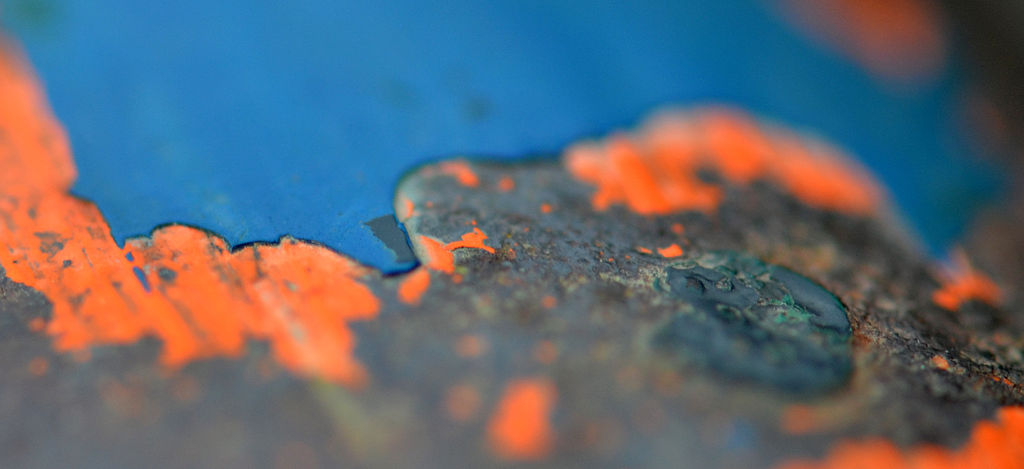
Image credit: By Lamiot via Wikimedia Commons
Preparation
Just like any project, undertaking the correct preparation procedures is vital to the success of your project. Usually, removing paint from brick and other surfaces is best done earlier in the year when the surface material has had months to dry out properly. When it is done too close to winter, when there is a change of freezing water, you run the risk of the moisture freezing and causing additional damage to your property.
It is not advisable to use removers containing caustic alkalis, such as caustic soda. These chemicals penetrate the substrate, attracting moisture. As the neutraliser often doesn’t tend to penetrate as deep as the caustic alkalis, this can then lead to future damp issues as well as coating adhesion problems.
Health & Safety
More importantly, when using any type of paint stripper, it is important to be aware of some basic health and safety considerations. Paint strippers contain chemicals and thus there are inherent dangers when dealing with them.
- Always read the labels and product data sheets. Each paint comes with its own description, but also its own risks. Do not gamble with your own health and safety.
- Inhalation of these chemical fumes can be detrimental for your health. When you are working indoors, ensure you always work in well ventilated areas and wear breathing apparatus where appropriate.
- Take care to avoid skin contact. Paint strippers can irritate your skin and can occasionally cause more than just a rash. Wear suitable gloves and other protective clothing.
- Protect your eyes and ensure no paint stripper gets into them, as it can cause serious damage.
- Generally, paint strippers are highly flammable, so keep them away from open flames. Do note that the more complex formulations are not flammable.
These are just some general safety tips. Again, to be completely sure what product you are working with, always read the label, manufacturers product Technical and Material Safety data sheets before use and when in doubt, get in touch for further advice.
Types of Paint Remover
There are two basic distinctions between paint strippers – these are solvent-based and caustic-based paint removers.
Solvent Based Paint Stripper
The solvent based paint removers work by breaking the bond between the object and the paint. The ingredients work by swelling the paint and weakening the adhesion of the paint to the surface. The solvent based paint stripper category also includes water based technology as water would be the ‘solvent’ in these products. Most will also contain small amounts of solvent in their chemical make-up but nowhere near as much as solvent based products.
Historically, solvent based paint strippers used to contain an ingredient called methylene chloride. As this chemical compound posed many different health risks, the European Union banned the use of this chemical in paint strippers for consumers in 2010. The use of methylene chloride products is now restricted to workshops only, so proof of this will be required before purchasing any paint strippers with methylene chloride.
So, do be aware when you’ve stumbled across an old tin of paint stripper. Many solvent based paint strippers on the market now have other active ingredients in to replace methylene chloride which are extremely flammable posing another risk. Nevertheless, care should still be taken when handling and paint strippers, even the water based ones.
Caustic Based Paint stripper
Caustic paint removers work slightly differently, as the ingredients work towards breaking down the chemicals in the paint. They have a very high pH-level and the active ingredient is usually sodium hydroxide. It is the sodium hydroxide that reacts to the oily ingredients with the paint and starts breaking it down. Again, care should be taken when working with caustic paint remover as it can cause skin burns for example.
As referred to above, damp can also be an issue as caustic based paint strippers attract moisture. Caustic alkalis also damage the cellulosic fibres of wood for example, causing irreversible damage. Hardwoods should never be stripped with caustic based paint strippers as it will turn the wood black.
The Health & Safety Executive (HSE) allows very low levels of exposure to sodium hydroxide in the workplace (Sodium Hydroxide, STEL 2mg/m3).
What Type of Paint Stripper to Use?
Whether you need to use caustic or solvent paint stripper depends entirely on the coated surface, what paint has been used and the condition of the coated surface.
Generally, solvent based paint removers are messier to use and are not that good at removing thick layers of built-up paint. They do provide a clear and clean finish with no damage or staining. They also tend to be slightly more expensive.
Caustic paint removers are good to use to remove thick layers of paint and are great to use on surfaces with detailed moulding due to its consistency. However, you do run the risk of staining or scorching the wooden surfaces for example, whereas solvent based removers do not stain or damage the surface.
Modern formulations such as Thermoguard Thermostrip PRO from Rawlins Paints contain benzyl alcohol which penetrates multiple layers very easily. For large contracts such as exterior property stripping, these types of products can remove 20 layers of paint in one application when used in conjunction with a DOFF powered steam system.
Stripping Paint from Wood

Image credit: By Etan J. Tal via Wikimedia Commons
If you want to strip a layer of varnish or paint, chemical paint stripping tends to be easier than sanding or sandblasting for wood. It is less harsh on the wood and when you are dealing with intricately carved ornaments, you will not run the risk of having to sand down some of their details.
Choosing the right paint stripper for wood depends on whether you are dealing with skirting boards, flooring or wooden furniture – for example.
Do you want to keep the natural look of the wood, or will the wood be recoated in a different colour paint?
If you want to keep the natural look and feel of the wood, there is no intricate carving and the surface has not been previously coated in a thick layer of paint, solvent based paint remover could be the way to go as caustic paint removers can cause staining.
If you are dealing with a beautifully carved surface, with thick layers of paint, or the risk of staining or scorching is not an issue, caustic remover might be a better option.
Patch testing is always recommended, as well as closely following the manufacturers instructions for each product.
Removing Paint from Brickwork
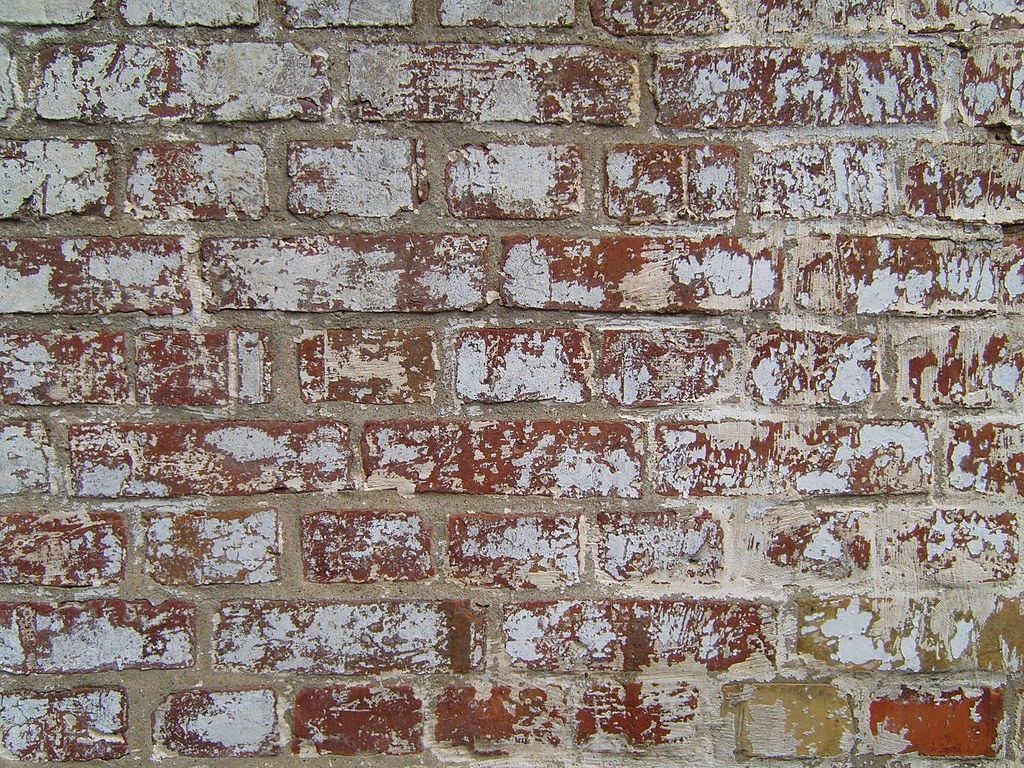
As hinted above, there are other ways of removing paint from brickwork. One of the quickest ways might be to take a power washer to it or sandblasting it off. The problem with this is that it more than likely to damage the brickwork underneath the paint. This type of treatment can cause the brickwork to become brittle or porous and at the end of the day can cause irreparable damage to your brickwork.
Depending on the size of your project, be aware that removing paint from brickwork can be very time-consuming. It is also very important to do a test patch to ensure the effectiveness of the paint remover.
Choosing a paint stripper that has been designed to be used on bricks is instrumental.
Paint Strippers at Rawlins Paints
Without seeing the surface, we are not able to recommend with certainty specific products to remove paint from brickwork, wood or other surfaces. We are of course always more than happy to assist with any inquiries you might have and we can be reached easily by phone for technical advice.
Below is a list of four of our paint removers. These products can be used to remove masonry paint, emulsion, varnish and other coatings from a wide variety of surfaces. Whether you want to remove masonry paint or emulsion from brick, or want to remove varnish or stains from wood, please read the product descriptions below for added information.
Rust-Oleum Nr. 1 Green Paint Stripper
At Rawlins Paints, we stock Rust-Oleum’s Nr. 1 Green Paint Stripper, a very versatile and user-friendly paint stripper. It has been specifically designed for the quick and easy removal of old paint. It removes all types of oil and alkyd based paints, as well as emulsion paints, varnish and most two-component materials. The Nr. 1 Green Paint Stripper has been devised for metal, mineral and wooden substrates. Due to its foaming properties, it is ideal for hard to reach nooks and crannies. It will be ideal to remove not too heavy coats of paint and varnish. Please note that this is a very flammable product, and the appropriate cautions should be taken.
Rust-Oleum Nr.1 Green Paint Stripper
Shop Now
|
Thermoguard Thermostrip Pro
Thermoguard’s Thermostrip Pro is a great paint stripper to remove water and oil-based coatings – this also includes carpet glue for instance! This product will remove paint, varnish, lacquers, stains and artex. It is safe to use for various surfaces, including wood, brick, metal, stone and fibreglass. It will not be as effective to clean thick layers of paint, and so multiple layers of paint may need a second coat. This product is temperature sensitive and works best at temperatures of around 25C. It is a great product for internal and external projects, whether it is decking, railing, boats or staircases.
Thermoguard Thermostrip PROShop Now
|
Blackfriar Professional Paint & Varnish Remover
Blackfriar have also created a very effective paint stripper. Unless you are recoating the surface with emulsion or water-based finish, there is no need to wash down the stripped surface. Their Professional Paint & Varnish Remover can be used on wood, metal and glass surfaces. It will not discolour wood nor will it raise the grain. It is a non-caustic paint stripper and due to its formula and holding properties, this paint stripper is easily applied on vertical surfaces. Again, if you are dealing with thick layers of paint, it might need to be allowed to sit longer on the paint and you might require more than one coat. This is a highly flammable product that can be harmful when not handled appropriately.
Blackfriar Professional Paint & Varnish Remover
Shop Now
|
 Rawlins Paints Blog Industrial Paint Tips, Guidelines & DIY Articles
Rawlins Paints Blog Industrial Paint Tips, Guidelines & DIY Articles
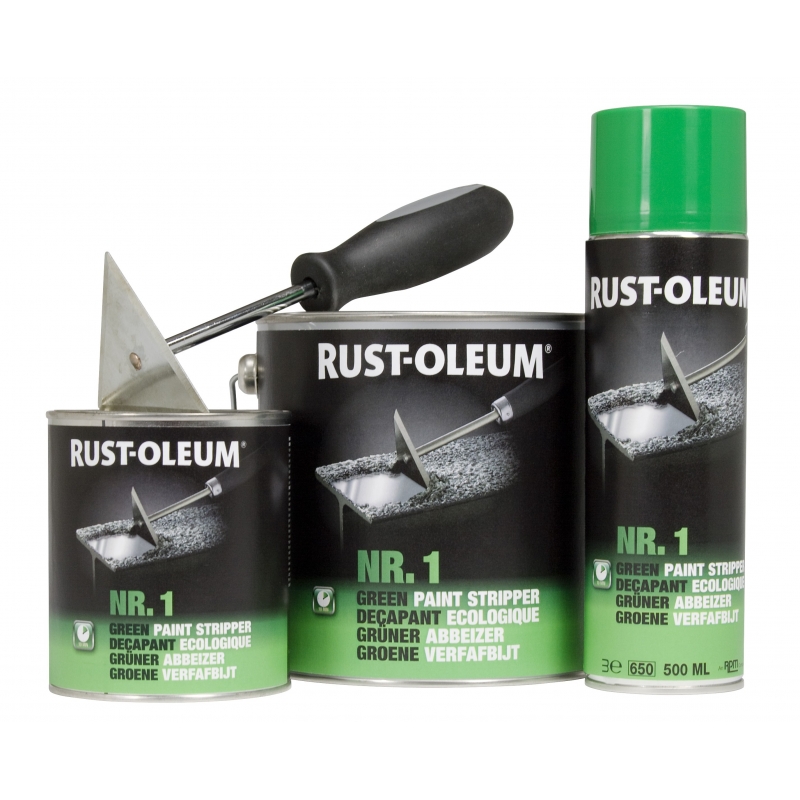
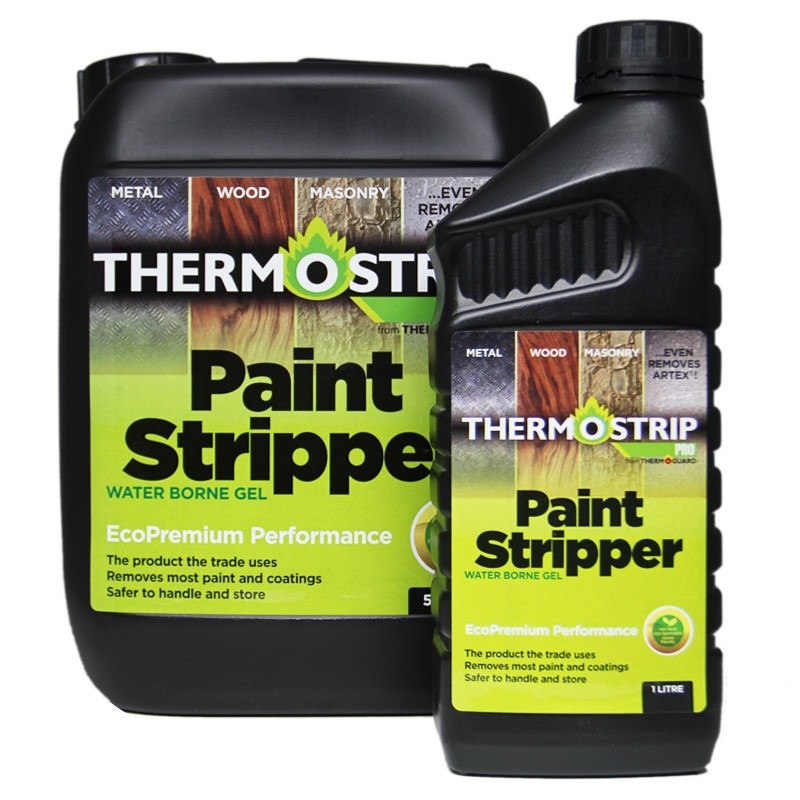
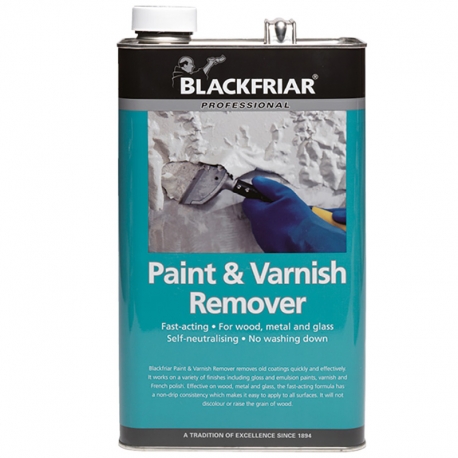
Yes, I totally agree with you. Health and safty should be the first concern while using paint removers especially eyes.
Need to remove thick paint from key holes on a metal gate. The padlocks were painted over and paint went into the key holes. Need to get that paint out asap because if the power goes out, my electronic gate can only be opened manually by the padlocks…which at present are completely filled w/ paint therefore the keys cannot unlock the padlocks
Hi Doris,
Thank you very much for your question. For this application we could recommend Thermoguard Thermostrip Pro which should work to solve the issue – this will essentially reactivate the paint coating so it will still need some form of equipment to help remove the now reactivated paint from the key holes.
I hope this helps and please feel free to get in touch if you have any further questions.
Many thanks
Stuart
I have old step back cupboard that has one coat of white latex paint over a very old blue color. Want to.remove white latex while preserving color underneath.Sugestions? T. Boyd
Hi Thomas,
Many thanks for you question – unfortunately best option for this project would be abrasion, as any paint strippers that we offer would potentially and remove the blue also.
I hope this helps and please feel free to get in touch if you have any further questions.
Many thanks
Stuart
I have Red Gard speed coating water proofing drops all over my new fiberglass tub and need a good paint solvent base remover ????
Hi Rosalie,
Many thanks for taking the time to read our blog and for your question. For this use we would advise using Hydron AG3 Graffiti Remover.
We would advise to try and scrape or sand the bulk of the paint off if they are thicker blobs of paint, and then to apply the graffiti remover to the paint only – ensuring the remover doesn’t come in to contact with the fibreglass to avoid any adverse reaction with the substrate.
I hope this helps and please feel free to get in touch if you have any further questions.
Many thanks
Stuart
Hi.. i have bought an 1840s house. A spinster has lived there since the late 50s and it has been empy 15 yrs.
Man..many layers of paint on all the beautiful high skirting and doorways.. i want to get it back.. and keep it as wood with no paint..
Im looking for something very strong.. as ive tried many products and spent a fair amount on strippers that are not coming close… please help… Carla.
Hi Carla,
Thank you for your question. We would recommend Thermoguard Thermostrip Pro for this application which is a fantastic product and is great for removal of multiple layers of paint.
I hope this helps and feel free to get in touch if you require any further information.
Many thanks
Stuart
Hello, I need to remove epoxy-phenolic paint from a metal structure, what product do you recommend, since I already use almost everything and it doesn’t work. Thank you
Hi Julio,
Many thanks for taking the time to red our blog. We would only recommend mechanical abrasion for the removal of this type of coating as unfortunately we couldn’t guarantee any of the paint strippers we offer would work on a solvent free epoxy.
I hope this helps and please feel free to get in touch if you have any further questions.
Many thanks
Stuart
A can paint spilled in a box in the trunk of my car. It was not detected until too late. How can I remove this very thick stuck paint on top of the ‘rubber” mat with pieces carton and a rag stuck in it?
Thanks in advance. MNikka
Good morning,
Thank you for reading our blog and for your question. To attempt to solve this issue we could recommend carefully trying Thermoguard Thermostrip PRO. Applying this thickly and then trapping the moisture with a plastic sheet – if possible do this in a warm area, this will help the product perform as intended.
The longer the dwell time is the harder it works – please be aware it may affect the rubber so we would advise proceeding with care and checking on this regularly. The addition of scraping etc. may be required to remove the softened material.
The data sheet for this product can be viewed here.
A few applications may be required depending on how tough the paint is.
I hope this helps and please feel free to get in touch if you have any further questions.
Many thanks
Stuart
Can the water being used in the thermo tech method be allowed to enter the waste water system ie grids on a main road
Hi Graham,
Many thanks for taking the time to read our blog and for your question. When using Thermoguard Thermostrip Pro, the Safety Data Sheet states: ‘Do not discharge into drains or rivers. Contain the spillage using bunding.’.
I hope this helps and please feel free to get in touch if you have any further questions.
Thanks again
Stuart
What do you recommend for removing paint from ornate cast iron work?
Hi Kent,
Thank you very much for taking a look at our blog and for your enquiry. We would recommend a combination of methods for this application.
Paint strippers can be used to help remove the bulk (such as Thermoguard Thermostrip PRO) if there are layers of paint built up. We would advise this should then be followed by some form of abrasion, by wire brush, sanding etc. being careful not to damage the ornate features and a thorough clean and degrease before painting.
I hope this helps and please feel free to get in touch if you have any further questions.
Many thanks
Stuart